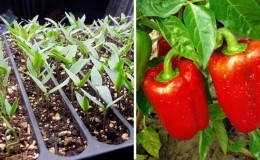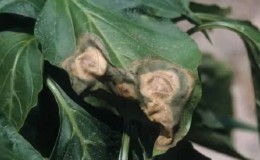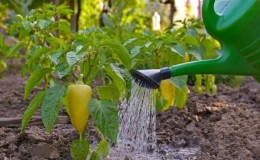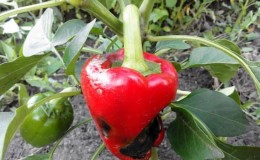Pepper

Ripening is bringing unripe fruits to a state of full ripeness. Vegetables picked from the bushes can be in one of two states - biological maturity (in this case they are consumed immediately) or technical...

To grow fresh vegetables yourself, you don’t need to have a summer cottage. Indoor decorative peppers do not require special care and take up minimal space on the windowsill or balcony. If you follow the recommendations...

Pepper is a heat-loving plant, so it grows in open ground only in the southern regions. In regions with cold climates, it is cultivated in greenhouses or greenhouses. But often, even in greenhouses, gardeners...

Appetizing and healthy dishes made from bell peppers from your own garden, without chemicals or additives - what could be tastier? Many summer residents decide to grow paprika without going into the rules and...

Bell pepper is a tasty and healthy vegetable, which contains zinc, iodine, iron, magnesium, phosphorus, sodium, potassium, calcium and vitamins A, E, B1, B2, B3, B5, B6, B9, C, ...

Pepper is a favorite crop of many vegetable growers, rich in vitamins and antioxidants. If you have sun, water and regular care, the vegetable will delight you with a rich harvest. But there are no plants that are resistant to all diseases...

Purple spots on the leaves, stem or fruit are a common problem for peppers, caused by a lack of phosphorus, metabolic disorders or the action of aggressive external factors. If you don't figure out the reason for the changes in time...

Pepper is a heat-loving and capricious crop, so it is not easy for gardeners living in cold climates to grow it. It is important to create optimal growing conditions, apply fertilizing correctly and in the right amount...

Bell peppers, popular among gardeners, belong to the nightshade family. This tasty and healthy vegetable is susceptible to the same diseases as other members of this family. As a rule, these are diseases of fungal origin associated ...
